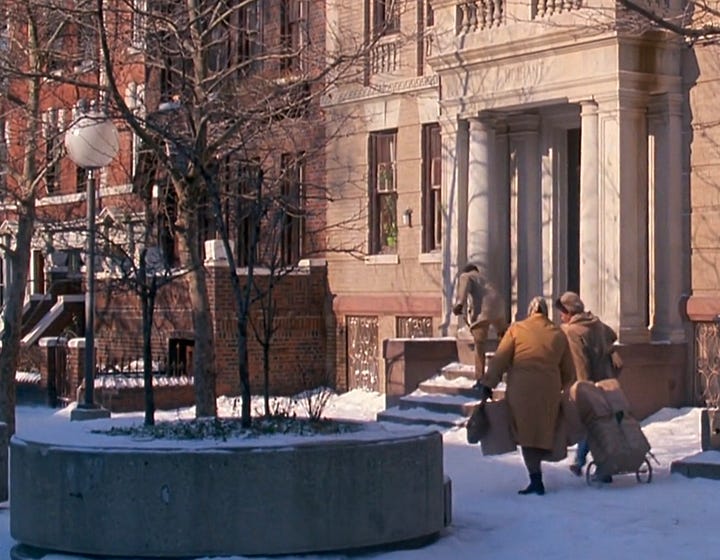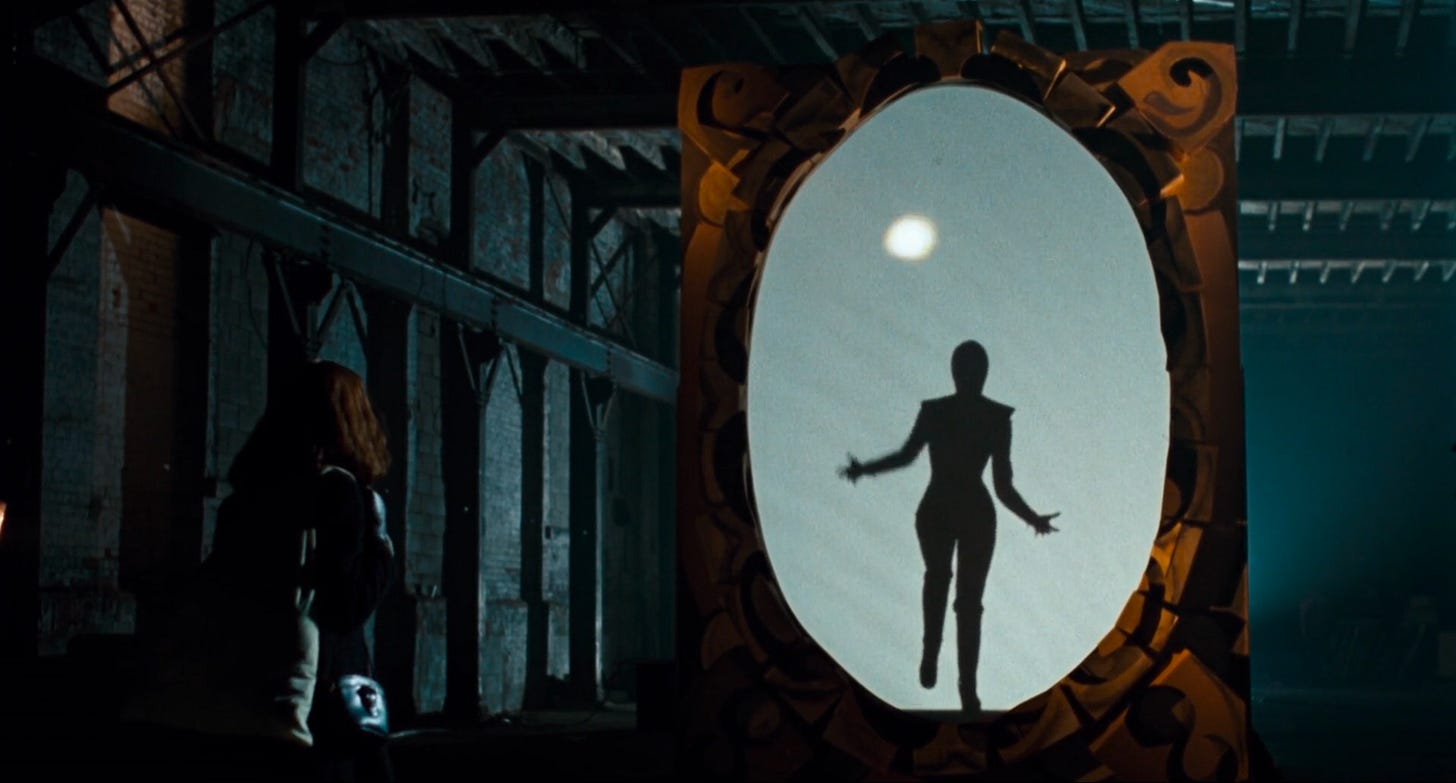Week 25.22 posts are all about colour! with shots from All That Heaven Allows (1955); When Night is Falling (1995); Schitt’s Creek (2015-2020); and The Wiz (1978).
The Wiz
Opening shots of The Wiz establish Dorothy’s neighbourhood has some large, bulbous streetlights.


When Dorothy runs out into the storm chasing Toto, these glowing, bright Emerald lights are one of the first signs we're about to be transported to the famous Oz.
All That Heaven Allows
We’ve looked at how this 50s melodrama uses colour to reflect emotions all throughout, and this scene depicts massive emotional shifts by drastically changing colours within one camera move.
The change from reds to blues is gorgeous and smooth, but the look is quite distinct from start to finish.
Doing it within one camera move carries us along with Cary’s emotions in real time, letting us observe as the colours and shadows gradate, instead of the more jarring feel which could come from cutting between angles. It enables us to track Cary’s turmoil, moving from full front-on illumination to darkness as she tries to hide her distress from Ron, even as she ends up facing him.


When Night is Falling
Another film which uses stark reds and blues, but the following come in a series of adjoining scenes, of Camille (Pascale Bussières) and Petra (Rachael Crawford).
Camille lives a strictly monitored religious life, while Petra enjoys a bohemian circus existence. The blues of Camille and reds of Petra — in wardrobe, lighting, background, and props / surrounding items — are stark in their first meetings at the laundromat and the circus.





But as the circus scene goes on, shots of Camille bring the red of Petra’s world into her frame, hints in the background and lighting signifying what Camille yearns for.
(Petra, she yearns for Petra.)
Schitt’s Creek
Karaoke scenes really lend themselves to drastic colour changes.
When Stevie (Emily Hampshire) performs “Maybe This Time” in 5.14 “Life is a Cabaret”, coloured lighting changes underscore her journey.
The scene starts bathed in yellow, before changing to blue as Stevie walks to the mic.
When she hits the spotlight the pink of her wardrobe and natural white of her face make her stand out against the blue backdrop, but everything else, including the audience, is still blue blue blue.



As Stevie performs and gets more confident, we see more flashes of red in the costume and the colours get slightly warmer.


The colour change builds with her until the final crescendo bathes her in warm red light, which spills out into the audience.



By the end, she’s fully bathed warm, bright, confident, powerful red.





